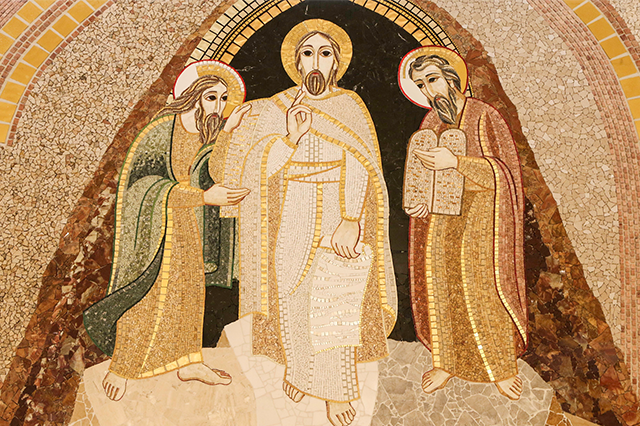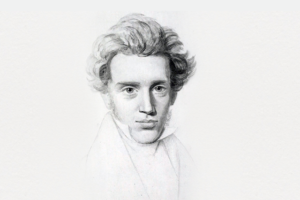Second Sunday of Lent
Gn 12:1-4 Ps 33 2Tm 1:8-10 Mt 17:1-9
Over the weekend I had the opportunity to lead a session on confirmation with adults first, and later with youth. I spoke with them about the gifts we receive through the sacraments and our call to the responsible exercise of those gifts for the transformation of the world.
This was adapted appropriately for each of the two age groups. Part of the discussion included my soliciting from their lived experience examples of grace which we could call gifts from God. I wrote these on one side of the board. Then, I asked for examples of the contrary, the ills which plague the world. Examples of the former came slowly and sparingly. But the calling to mind the ills of the world was no problem at all. I couldn’t keep up with the responses as I wrote. Before I knew it, the board was full. Sadly, this was true with the youth as well, among them were some as young as ten years old. The responses included the broad spectrum which is before us in the nightly news, social media, and in our own homes- disease, violence, war, sexual abuse, damaged relationships, loneliness and so on. I believe this Sunday’s readings can speak a word of hope to this bleak reality.
“Listen to him”
(Matthew 17:5)
On this Second Sunday of Lent, as we continue our sojourn into the wilderness, the liturgy draws our attention to the narrative of the transfiguration. Jesus takes Peter, James, and John “up a high mountain” (Mt 17:1) and is transfigured before them. The transfiguration is one of those mysteries in the life of Jesus which does not readily open itself to interpretation. The questions this event raises outnumber what is resolved in the interpretations. In the context of the life of Jesus, the event occurs after the first prediction of his death. This has led some biblical scholars to conjecture that the transfiguration serves to solidify the faith of the disciples in Jesus’ messianic identity, which is shaken by that prediction. That account seems sufficient as far as pragmatism goes. But it does not get at the deeper currents this gospel narrative stirs up. The event is unique because it unveils the glory of Christ in a way not even evident through the encounters with the resurrected Jesus, wherein he goes unnoticed in one account (Lk 24, Mk 16), and startles in others, but not because of his appearance, rather due to the shock of seeing him alive. Alternately, there is exegesis which hones in on the significance of Moses as representative of the law and Elijah of the prophets. This situates Jesus within these two traditions but also above them when the voice from the clouds says “listen to him”(Mt 17:5).
I don’t dispute the validity of these approaches. But I find they are neglecting the main point here, and that is a mystical one. Elijah is the prophet who goes up to Mt. Carmel and draws down the fire of the Lord upon the sacrifice. In the time of Elijah, all of God’s people had turned their backs on their God and given in to worship of Baal, there were hundreds of prophets for the foreign Baal, but only one remained for the God of Abraham and Isaac. The Israelites were lost spiritually. Elijah directs the Israelites to the top of Mount Carmel, where the air is rarified. The Mountain top represents a perspective where one can gain sufficient distance from the daily concerns of life to realize their smallness. The glory of God is not easily perceived. We must take the challenge to scale the mountain first.
Moses is another who encounters God from atop the mountain. The Israelites, here too are lost, they are unable to approach the Lord. But Moses is allowed to bring Aaron. And the mountain top is the place where the law is inscribed in the people of God. Like the Israelites in the time of Moses and in the time of Elijah, as Peter, James, and John, we too are unable to perceive the Glory of God from the lower regions of our life. The mountain top is the place of revelation. What I noticed with those retreat participants was that the ills of the world are always before our eyes. We don’t need to strain to see them, sometimes they overwhelm us. But to see the glory of God, to peer behind the veil requires the perspective, the eyes, of the mystic. This mystical revelation lives in the rarified air of the mountaintop- the place where the heavens touch the earth.
“…The Lord came down upon Mount Sinai, to the top of the mountain…” (Ex 19:20) So too, on the mountaintop, Jesus reveals his glory, not to all, but to those who dare to scale it with him, the privileged few who accept this invitation. During this time of Lent, I beseech you to scale the mountain, do not allow the incessant and dismal reality of life to prevent you from creating a space and dedicating time to surmount the obstacles to see “…his face shine like the sun and his clothes… white as light.” (Mt 17:2)
Photo credit: Lawrence OP “Transfiguration.” Mosaic by Fr Marko Rupnik SJ from the National Shrine of Saint John Paul II in Washington DC.



